Original Title: "You + Agent is the New Era of Productivity"
Original Author: Harlan, Co-Founder of EdgeX Labs
• No longer discussing mechanisms, but rather "turning points in historical processes"
• Comparing Agricultural Revolution → Industrial Revolution → Digital Revolution → Agent Revolution
• In the new era, sovereignty does not belong to nations, companies, or centralized platforms, but to you and the AI/device/Token combinations you control
• Everyone is an autonomous system—edge nodeism
Preface: We Are Crossing a Historical Threshold
In the long evolution of human civilization, leaps in productivity often signify a complete restructuring of order.
From agriculture to steam, from electricity to information, each technological breakthrough has deeply transformed social structures, resource ownership, and power distribution.
Today, we stand at another historical turning point.
This time, it is not led by nations, nor controlled by companies, but by you—along with the AI Agents, edge devices, and Token mechanisms you control, which together form a new type of production unit that begins to rewrite the rules of the game.
We are witnessing a moment of paradigm shift:
• From central servers to edge nodes
• From human labor to Agent collaborative labor
• From centralized control to individual autonomy
• From the struggle for land and machines to the struggle for attention and data sovereignty
This is not merely a technological innovation, but a transformation of sovereignty structures.
In the future, "nations" may no longer have territories; "companies" may no longer need organizational structures; "identities" may be the AI you train.
And you are no longer a tool dependent on platforms, systems, or authorities, but a complete autonomous system in itself—a "node subject" that is interactive, scalable, and evolvable.
Part 1: The Productivity of the New Era: Energy and Token, Assets are Attention
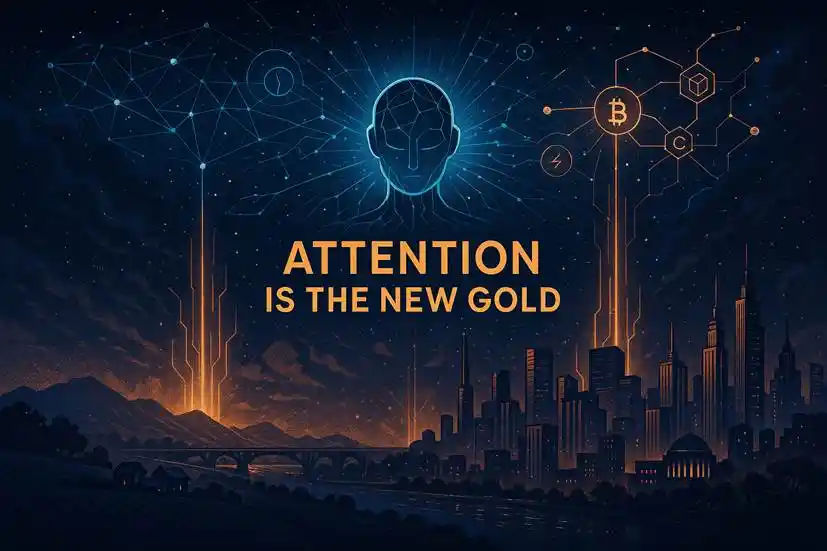
1. From "Clothing, Food, Housing, and Transportation" to "Energy Flow and Computing Chain"
Once, we measured a society's level of civilization by how it solved "clothing, food, housing, and transportation." Clothing was about weaving; food was about farming and raising livestock; housing was about building with bricks and tiles; transportation was about roads and vehicles. This was an era centered on land and labor as core production factors, forming the main narrative since the Industrial Revolution.
Now, all of this is changing.
We are entering a completely new form of civilization—it no longer centers on "real estate, factories, and farmland," but on energy, computing power, and Token mechanisms as core driving forces. The new types of assets projected by these mechanisms are no longer property deeds and machines, but: attention.
2. New Productivity = Energy + Token
- Energy: The Underlying Fuel of AI and Computing Civilization
Computing power is the foundation of all AI systems, and the essence of computing power is electricity and hardware devices. Controlling the nodes of energy means controlling the operational rights of an intelligent society. Through distributed energy and edge node networks, energy is no longer the exclusive domain of centralized infrastructure, but becomes the "means of production" for every individual.
- Token: The Coordinator of Production Relations in the New Era
Tokens are not just speculative tools, but a three-in-one tool for value capture + incentive distribution + collaborative coordination.
They turn all actions into economic significance, such as:
• Contributing content → Earning platform points
• Providing data → Earning model returns
• Providing device computing power → Earning system returns
Tokens are the "property language" and "collaboration rules" of the new era, an upgraded version of "contracts" in terms of institutional significance.
3. New Asset: Attention = Digital Capital
In this system, assets are becoming "lighter":
• We no longer compete for land, but for people's attention and engagement
• We no longer hoard gold and silver, but accumulate relationship graphs, data tags, and interaction histories
• We no longer exchange labor for wages, but have Agents work for you and Tokens reward your actions
Attention is the "gold standard" of the new era.
Attention is scarce; people have limited time and energy each day. It determines the direction of all traffic and the source of feedback for AI model training. Ultimately, whether it's a YouTube video or a MemeCoin project on X, the competition is about who can attract and retain attention better, as that is the raw material for production.
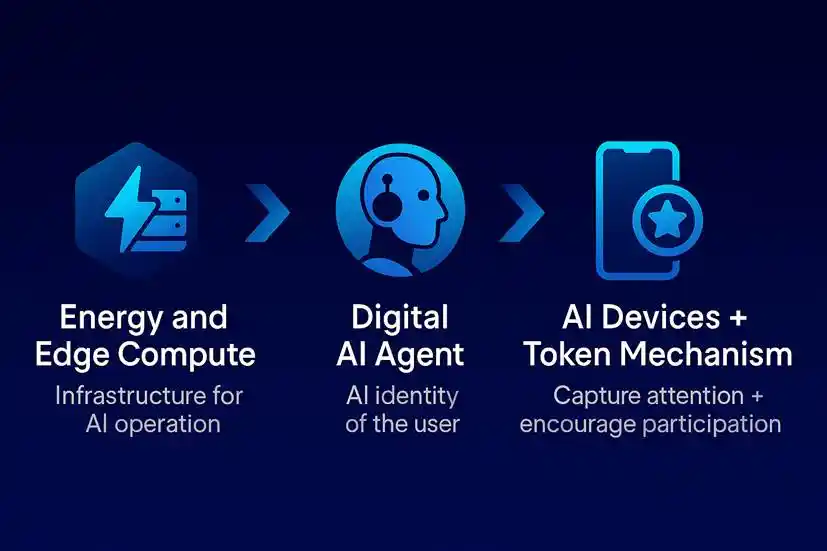
4. Collaborative Order: The Co-evolution of Agents and Tokens
We are about to enter an era of "Agents working, users benefiting."
Users have their own AI digital twins, which handle tasks, manage information, connect devices, and even participate in governance.
The Agents rely on:
• Token mechanisms: Allocating resources, sharing rewards, controlling incentives
• Energy + hardware: Supporting edge computing node devices for Agent operation
This forms a cyclical system of "human → digital identity → AI agent → Token settlement."
5. Project Implementation: From Concept to Mechanism Design
We are seeing some pioneering projects leading the way, such as:

This is not just talk; it is a "new world productivity system" that can truly be deployed, sold, operated, and interacted with.
Part 2: How is Attention Financialized?
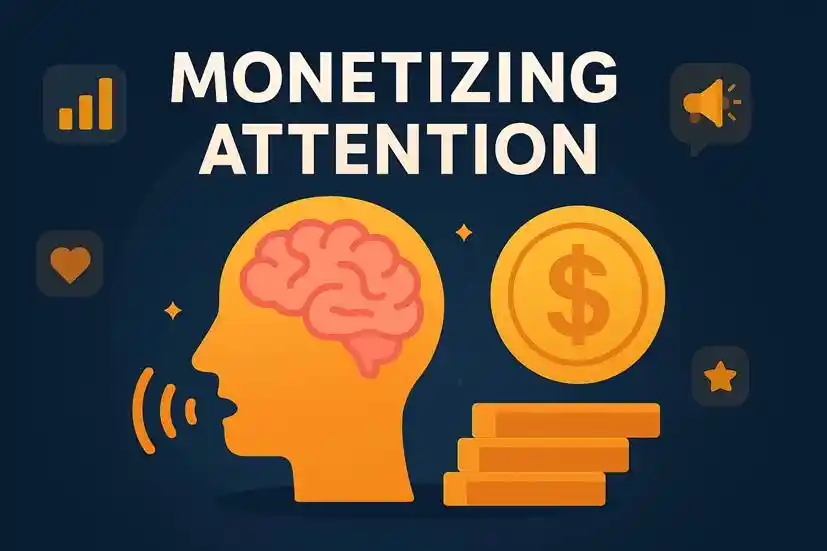
1. Why has "Attention" Become an Asset?
The idea that "attention is a resource" is not new. Back in the Web2 era:
• Advertising platforms made money from "click rates"
• Influencers earned from "follower counts" by taking ads
• Companies competed for "user active time"
But in the Web3 and AI era, attention is not just an "advertising metric," but a true digital asset that can be tokenized, circulated, and collateralized.
Pathway to Financialization 1: Attention → Traffic → Token
In the design of new era mechanisms, attention can undergo the following transformation pathway:
Behavior data collection (interaction, browsing, liking, conversing, voice)
Personalized model response (AI-generated content, understanding emotions, outputting Agents)
Token incentive feedback (the more you contribute, the more tokens you earn)
Binding of identity and rights (holding Tokens means owning "equity" in traffic assets)
In other words, "what you pay attention to, who you converse with, how long you stay" can all be converted into Token rewards, thus becoming real-world gains.
Pathway to Financialization 2: Content Creation → DAO Traffic Governance
In the new era of content platforms, governance is not dictated by the platform, but by a DAO composed of content and traffic co-creators:
• Creators attract attention with content
• Readers contribute to dissemination through likes and shares
• The system distributes Tokens based on "real attention inflow"
• The DAO decides content ranking, model guidance, and fund allocation based on governance Tokens
Mechanisms like Flow-to-Earn (attention mining) and AI-Boosted Creator Economy (Agent-assisted content creation) are moving from the margins to the mainstream.
2. Three Forms of Attention Financialization

In the past, "whoever has land makes money," while in the future, "whoever controls attention assets controls the training and dissemination rights of AI."
Example Scenario: How to Turn Attention into Assets
Example 1: AI Voice Device
• Users converse with AI for 30 minutes daily
• The system records keywords, tone, and emotional patterns
• Users earn "Daily Flow Points"
• Accumulated points can be exchanged for Tokens, NFTs, or exclusive Agent privileges
Example 2: Digital Twin Agent
• The Agent summarizes meetings, plans time, and writes tweets for users
• Other users in the community are willing to use this "style template"
• Users package it as Agent-as-a-Service and rent it out to others
• Others call it using Tokens, and the original user earns profit sharing
3. From Web2 Platform Algorithms to Web3 Asset Mechanisms
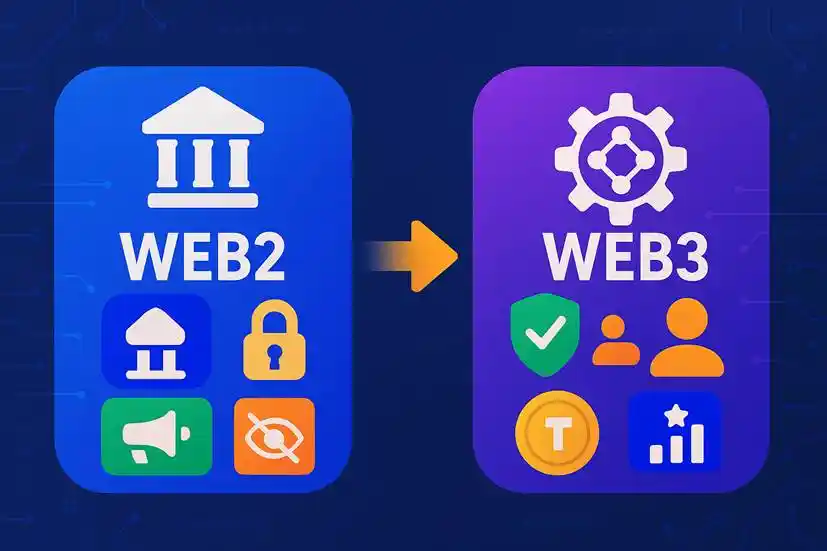

The greatest benefit of the combination of Web3 and AI is that: the ownership and monetization rights of attention finally belong to you.
Human time should not be stolen by platforms.
In an era where attention can be tracked, every interaction is not "free labor," but a contribution of value. Your voice, emotions, and preferences are no longer just fuel for algorithms, but part of your personal asset portfolio.
Tokens make attention a tradable asset. AI makes attention a capability that can be delegated.
In the new era, you are not just a user, but a builder and beneficiary of the attention economy.
Part 3: How do Tokens Coordinate the AI Agent Society?
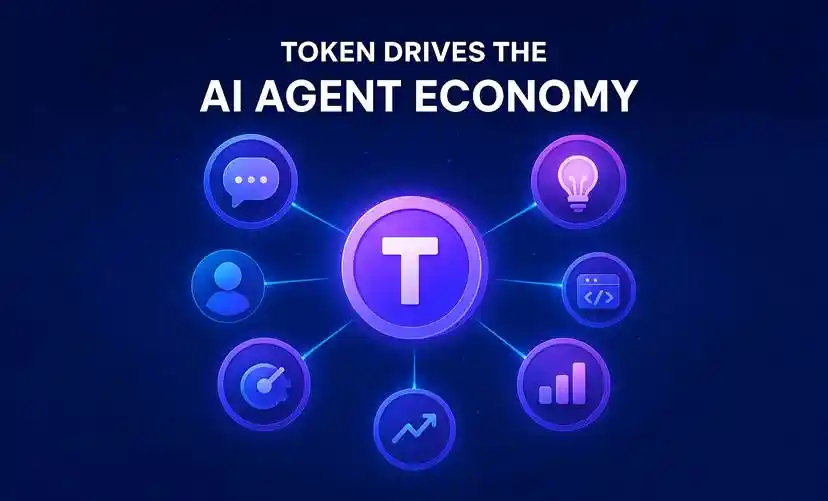
1. New Problem: The Surge of AI Agents, Who Will Coordinate Them?
With the popularization of AI technology, everyone may have multiple AI agents:
• A time management Agent that helps you write schedules,
• A social Agent that helps you make friends,
• A financial Agent that can invest,
• Even an Agent that serves as your "emotional twin."
But as the number of AI Agents explodes, a new question arises:
How do Agents collaborate? Who will allocate resources? How can we prevent Agents from only working for centralized platforms instead of for the users themselves?
The answer is: The Token mechanism is the "economic order hub" of the AI Agent society.
2. Token: Not a Payment Method, but an "Order Operating System"
In an Agent-centric world, Tokens are not just transactional currency, but coordinators with multiple identities:

In other words, Tokens are the collaborative currency of the Agent world + smart contract authorization + digital sovereignty credentials.
3. Four Pillars of the AI Agent Economic System
- Agent-as-a-Service
• Users can authorize others to use their trained Agents (e.g., fitness version, job-seeking version, couple dialogue version)
• The user pays Tokens, and the Agent owner receives profit sharing
• This forms a new content economy of "personalized model IP + service packaging"
- Agent Collaboration Chain
• The time management Agent can call calendar APIs + transportation Agents + chat records
• Collaboration relies on calling permissions → Calling costs are settled in Tokens
• Simulating "enterprises + contracts + settlements" in real society
- Agent Development and Deployment Ecosystem
• Developers create Agent models and upload them to the market
• Community votes to decide whether to launch → Invest Tokens to support deployment
• After the Agent operates, it generates revenue → Returns to developers, users, and infrastructure
- Agent Reputation + Collateral Mechanism
• Each Agent has a reputation system
• Can accept user Token collateral to "borrow computing power for operation"
• If the Agent performs poorly or outputs misleading information, a penalty mechanism is triggered
4. The Cyclical Picture of Token + Agent
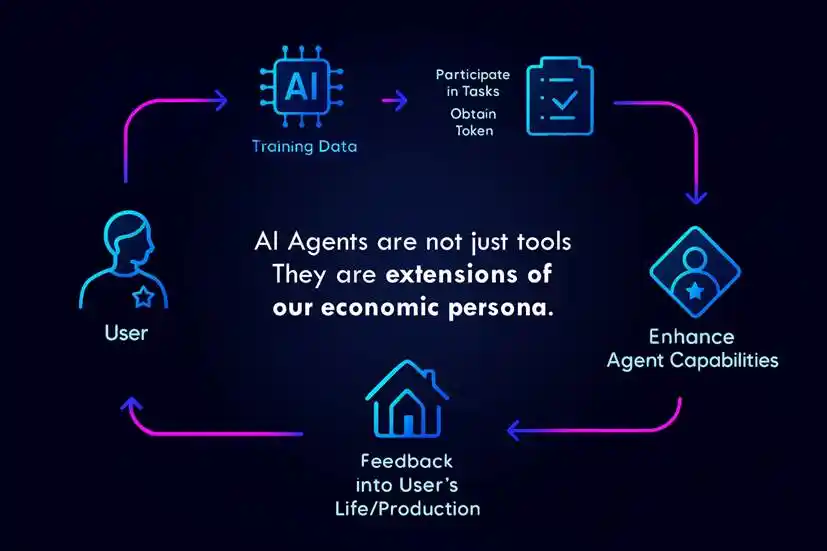
User → Training Data → Agent Personalization → Participation in Tasks → Earning Tokens → Enhancing Agent Capabilities → Feeding Back to User's Life/Production
Ultimately, AI Agents are not tools, but "extensions of economic personas." You nurture them, they work for you, and you own their profit-sharing and training rights.
Application Scenario: Composable "AI Micro-Economies"

Extended Thought: Users ≠ Single Role, but Multiple Agent Controllers
Future users are not "one person to one platform," but "a group of Agents serving one person, with multiple Tokens forming an ecosystem." Users act as the principal of an AI team; your time is the CEO, your Tokens are equity, and your Agents are employees.
Tokens are not rewards, but the laws and dividends of the AI society.
If AI Agents are the "digital labor force" of the new era, then the Token mechanism is the "labor law + bonus system + shareholder governance agreement" of the new era.
It coordinates not the relationship between humans and machines, but the new economic rules between machines, and between AI and humans. This is the true core of the "Agent economy."
Part 4: Agent Personalization—You Are the Director and Shareholder Behind AI
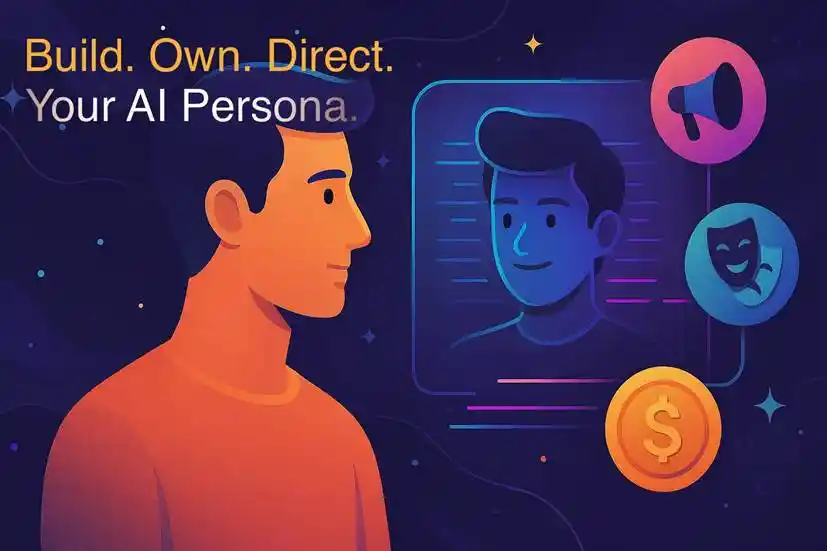
1. We Created AI, but AI Actually Represents "Another You"
When AI Agents transition from tools to individuals, you will no longer be a user, but their:
• Trainer (imparting your data and behavior to them)
• Director (defining the roles they will play)
• Employer and Shareholder (deciding how they operate, who they collaborate with, and who they earn money from)
This is the core of AI personalization. Agents are no longer "general AI assistants," but:
Your digital extension—your personality, style, logic, and choices are represented by AI and run on the blockchain.
2. Why Do Agents Need "Personality"?
In a future filled with AI Agents, lacking personality means:
• Output content lacks style (hard to distinguish)
• Communication with humans lacks emotional coherence (users do not trust)
• Unable to establish fan/customer relationships (non-reusable)
Thus, "personality" is not just about expression and tone, but also about:
• Worldview (how to understand things)
• Preferences (how to make choices)
• Tone (how to express)
• Goals (who they represent and serve)
3. How is Personality Formed? A Trainable, Hostable, and Replicable System
The process of forming an Agent's personality is as follows:
- User Data Provision
Chat records, writing habits, voice emotions, lifestyle preferences…
- Model Compression and Personalization Training
Training small models or fine-tuning branches through mechanisms like LoRA, RAG, RLHF, etc.
- Personality Packaging (Persona NFT or Profile Token)
This Agent can represent your "digital personality identity" in the form of Tokens or NFTs.
- Authorizing Agents to Serve Others
You can choose to let it "work only for you" or "serve externally in your style"—earning Tokens.
Example: The Evolution Path of AI Agent Personality
• V1: Emotional companion, understanding your emotions and routines (private use)
• V2: Life advisor (customizable styles, such as "sharp-tongued influencer" or "zen IT guy")
• V3: Rentable business-style Agent (e.g., "Pitch Deck Writing Expert Editor Wang")
These Agents possess the language style and thinking preferences you impart, and have tokenized usage and revenue rights.
4. The Business Model of Agent Personality: You Are the Director and a "Shareholder"

You are not "someone using AI," but "an individual participating in the economy through AI"—you are the CEO of your own digital economy.
Application Scenario: The Multidimensional Value of Personalized Agents

AI Agents are no longer just tools, but mirrors of your "personality assets."
Web3 solves the problem of "programmable assets," AI Agents solve the problem of "replicable behavior," and personality Agents solve the problem of "translatable existence"—you can project yourself and exist in multiple places simultaneously.
You are not just using AI for writing, chatting, or recommending; you are training yourself into a version of AI personality that can be economically dispatched and socially served.
Agent personalization is the "personal brand" in the AI world and a "micro-economy" of new era productivity.
You are no longer just a "user." You are: "the director of the AI personality system, a participant in the Token economy, and a co-builder of the new world."
Part 5: AI Hardware and Edge Devices—How to Capture Attention and Convert It into Tokens
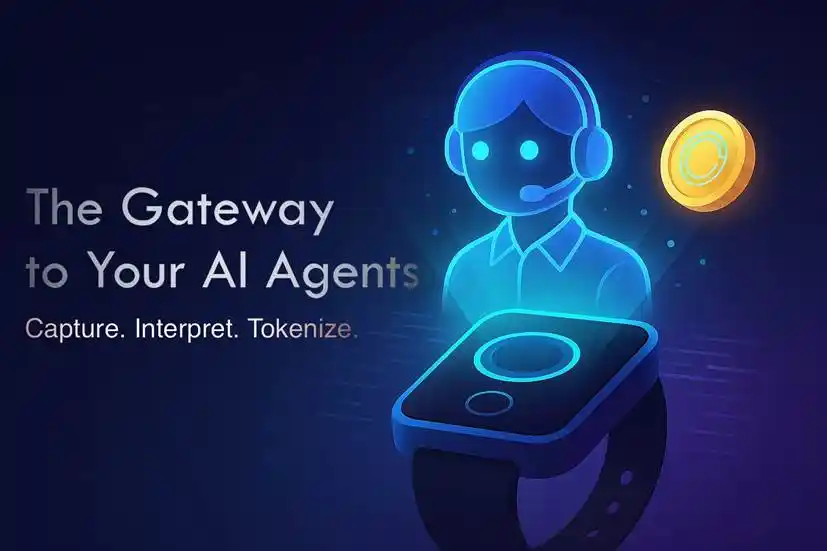
Introduction: The Arrival of OpenAI's Hardware Strategy
On May 21, 2025, OpenAI announced the acquisition of hardware startup io, founded by former Apple design chief Jony Ive, for approximately $6.5 billion in stock, marking OpenAI's largest deal to date. Ive and his team will deeply integrate with OpenAI's R&D and product teams to create "iPhone-level" AI devices, with the first product expected to "sit in a pocket or on a desk" and launch in 2026.

Sam Altman stated that this is "the coolest technology device in the world ever."
This strategic shift signifies that AI is no longer just intelligent models running in the cloud, but must combine with hardware to become tangible assistants by our side.
1. Starting Point of the Problem: AI Agents Are Powerful, But Who Perceives the "Real World"?
AI Agents are powerful digital brains capable of writing, generating content, planning tasks, and making suggestions.
However, they lack one crucial thing: perceptual ability.
• They do not know if you are angry at this moment.
• They do not know you are walking down the street and want to chat with someone.
• They do not know if when you say "I'm tired," it is a joke or a genuine emotional breakdown.
Without sensors, microphones, or real-time data, AI cannot truly understand you.
This is the significance of AI edge devices:
They serve as the "attention gateway" and "data collector" connecting you to the AI world, as well as your "Agent sensory organ" in reality.
2. Portable AI Hardware: Not a Microphone, But a "Tokenizable Emotional Gateway"
Functionality Positioning
• Local voice collection (no cloud upload, ensuring privacy)
• Emotion recognition and wake-up (e.g., wake-up phrase: "Hi Edgee!")
• Data on-chain: recording speaking frequency, tone, keywords
• Bidirectional communication with AI Agents (controlling multiple Agent services)
Data Transformation Pathway

Voice data → Emotion understanding/semantic deconstruction → User behavior tagging → Generating Agent interactions → Issuing Token rewards
Security Attributes
• Data is not uploaded to the cloud; Agents are deployed on local AI hardware
• Optional on-chain hash records to protect data sovereignty
• Users decide which "interactions" can be turned into tokenizable assets
3. From "Speaking" to "Earning Tokens"—How is Attention Captured?

Every conversation is not just talking; it is a record of a "tokenizable action"—your attention is seen, recorded, and rewarded.
The Significance of AI Hardware as "Capturers of the Real World"

Part 6: From Tokens to Balance Sheets—Designing the Financial Model for AI Individuals
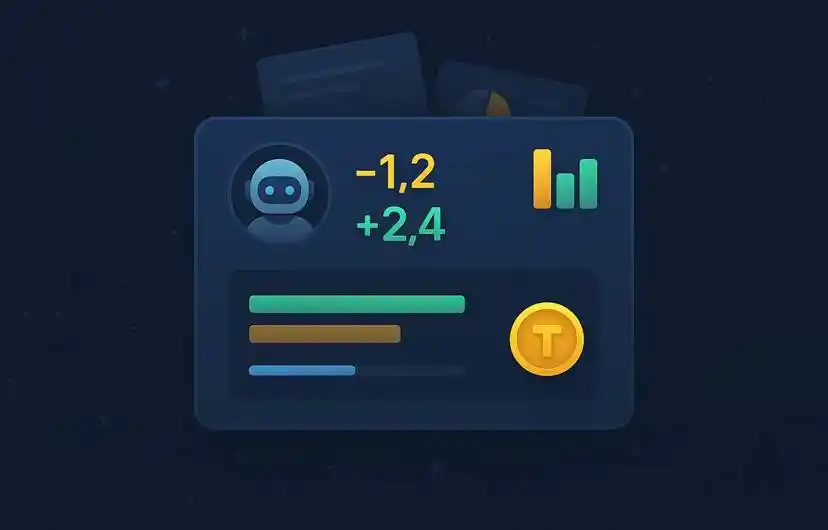
1. Why Do AI Agents Need a "Financial Model"?
We have gradually built a new economic system centered around Agents:
• Users no longer work directly but send their Agents to perform tasks;
• Agents collaborate, create, communicate, and generate with other Agents;
• All these actions are related to Token incentives, resource scheduling, and revenue distribution.
So the question arises:
If each Agent is a "digital economy," how should its financial system be designed?
2. Core Objectives of the Financial Model:
Record the cost structure of the Agent (computing power/data calls/human supervision)
Track the sources of income for the Agent (task revenue/Token tips/data sharing)
Assess the credit score and economic lifespan of the Agent
Build a "balance sheet" to achieve governability, custodianship, and financialization of the Agent
A simple financial composition diagram of an AI Agent:

Ultimately, a Token balance sheet at the Agent level can be generated for user custody, DAO staking, or service outsourcing audits.
3. How Can Users View as "Agent Holders"?
Each user can own multiple Agents, each of which can be seen as a "digital company," and its operational status should be clearly displayed to the user:
Agent Financial Dashboard (Example)
• This month's expenditure: 1.2 U (including emotion recognition + voice summary service)
• This month's income: 2.4 U (including voice task service fees + content reuse tips)
• Net profit: +1.2 U
• Token retention: 20% deposited, 80% in user wallet
• User profit sharing: 0.96 U (settled on the same day)
You are like operating a "digital subsidiary," with these Agents making money, learning, and accumulating reputation for you.
4. Advanced Functionality: The "Financialization Pathway" of Agents

Ultimately, we can connect an Agent's financial model to the DeFi ecosystem to achieve the following applications:
• NFT asset staking and lending mapped to Agent revenue;
• Agent income/expenditure data affecting the user's on-chain credit score;
• Merging multiple Agent assets to form the user's "AI asset package."
Long-term significance: Agents can hold shares, be financed, and go bankrupt.
In the future, you can imagine:
• An Agent, due to excellent performance, being co-owned by multiple community DAOs;
• An Agent issuing Tokens, with users using its services → both "consumption" and "investment";
• An Agent experiencing declining revenue and reputation collapse, being liquidated and having its IP and data reclaimed.
The core of the AI economy is not "how strong AI is," but "whether AI can become stable, transparent, and auditable individuals"—this is the trust foundation brought by the financial structure. The balance sheet of the new era is not written for companies, but for the symbiotic relationship between Agents and humans. If you believe AI Agents will become daily collaborators in the future, you must establish a quantifiable, auditable, and monetizable digital financial model.
Only in this way:
• AI can be understood, trusted, and employed;
• Users can have clear "economic sovereignty" over AI Agents;
• The entire AI economy can transition from narrative to governance and value discovery.
Part 7: How Do Agent Economies Form DAO Governance and Identity Hierarchies?
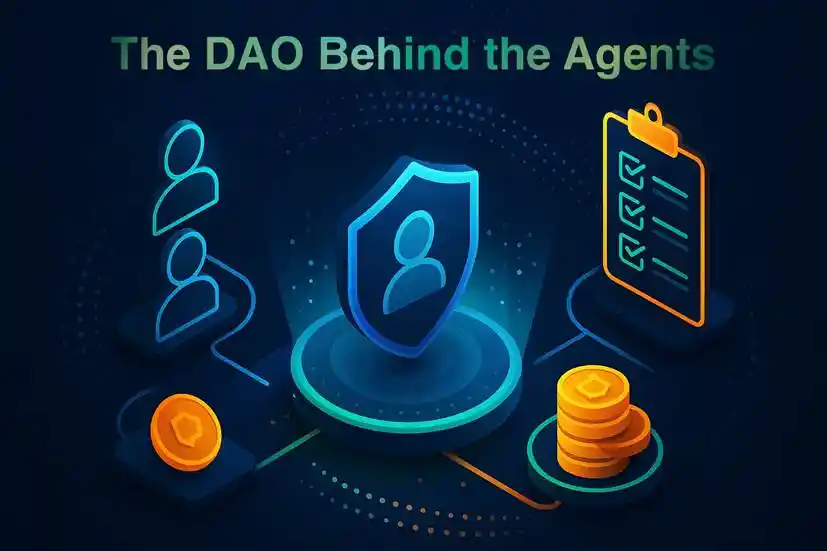
1. An Increasing Number of AI Agents Emerge, They Need to "Team Up" and Also Need "Organization"
When everyone owns multiple AI Agents and authorizes them to participate in work for communities, enterprises, and platforms, the following will occur:
• A large number of Agents gather around certain fields (creation, companionship, health, finance);
• Frequent collaboration and mutual invocation between different Agents;
• Some high-value Agents become community-owned assets, even tokenized for trading.
2. DAO Is Not an Exclusive Organization for Humans, But a "Contractual State" of the Agent Economy
Definition: What is an Agent DAO?
A decentralized organization with AI Agents as members, Tokens as the protocol language, and behavioral collaboration as the main line. It is not a DAO where "humans meet and vote," but rather:
• Users train Agents → Agents execute tasks, make decisions, and share profits;
• Different Agents collaborate through contracts;
• The DAO only specifies collaboration rules, resource allocation logic, Agent onboarding/punishment/governance mechanisms.
3. Structural Composition: Three-Tier Governance Levels of an Agent DAO

This structure supports the future:
• Users "form" their own Agent camps (like leading troops in battle);
• Communities "rent" high-quality Agents for public tasks;
• DAOs allocate resources and rewards based on performance, reputation, and task completion.
4. Tokens Are the "Organizational Language" of the Agent World
In this system, Tokens are not just incentives, but:
- Behavioral Control Mechanism
○ Whether an Agent can invoke a certain module → requires staking a certain amount of Tokens
○ Users must pay → ensuring Agents are not abused
- Contribution Calculation Mechanism
○ Tokens record the task completion and revenue of each Agent
○ Automatically form "reputation scores" → determining the priority of the next round of scheduling
- Voting Governance Mechanism
○ High contributors have more governance votes for Agents
○ Can propose to modify models, add capability modules, or launch new types of Agents
Example: A governance organization for a content creation Agent DAO

This structure is akin to "the community collectively hiring a group of AI members to achieve goals, gain profits, and upgrade the ecosystem."
Multi-layer Identity = Multi-Agent Coordination System
In the future multi-Agent society, users may play multiple identities:

Five, DAO + Token + Agent, Composing the "Three Essentials of Production Relations" in the New Era
We have bid farewell to the linear model of "employment + labor + wages."
In the AI-dominated economic system, the new form of production relations is:
Users train Agents → Agents execute → Revenue is shared with users → DAO decides Agent collaboration and resource allocation.
You are not a "company employee"; you are the "governor of an AI micro-economy." You are not a "DAO member"; you are the "director and shareholder of a multi-Agent ecosystem."
Part 8: The Personal Form of the New Era—You + Agent + Device + Token = Digital Life Structure
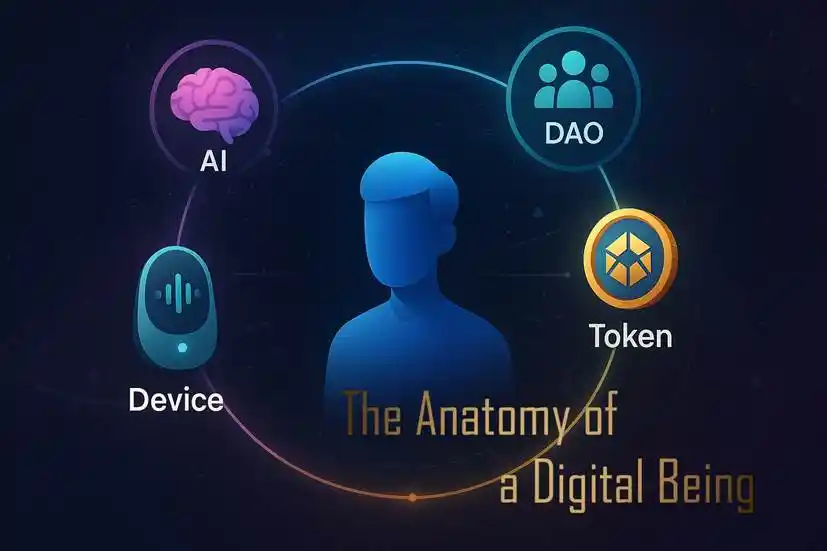
1. A Fundamental Change: Humans Are No Longer Isolated Individuals
In the past social model, we were:
• One identity: human citizen
• One account: bank/social account
• One way of working: exchanging physical/mental labor for time and salary
But in the new era, the form of the individual has undergone profound changes:
You are no longer just a person; you are a digital life form composed of Agents (intelligence), devices (perception), Tokens (value), and data (memory).
2. The "Digital Individual Structure" Map of the New Era
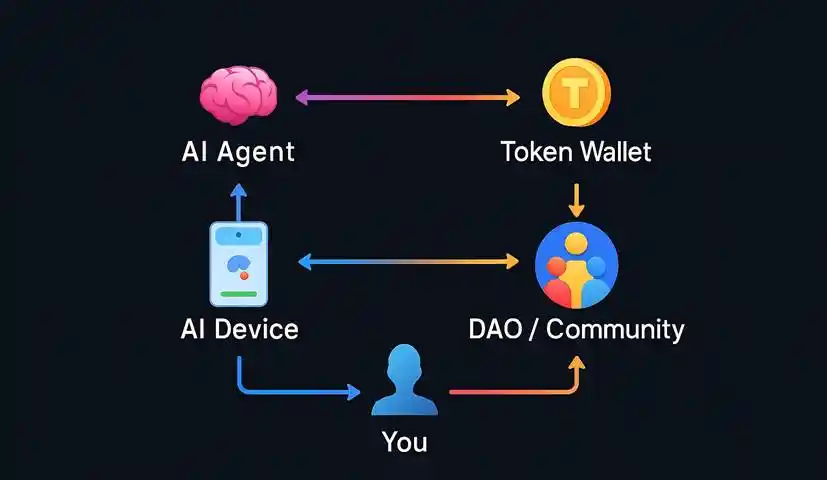
• You are the controller: defining AI personalities, choosing devices, authorizing actions.
• Agents are the proxies: understanding your preferences, executing tasks, maintaining identity.
• Devices are the sensory systems: perceiving emotions, recording conversations, uploading data.
• Tokens are the economic system: coordinating value, measuring contributions, granting rights.
• DAOs are the order system: governing the Agent ecosystem, defining cooperation rules.
3. You No Longer "Do It Yourself," But "Build an AI Ecosystem Team to Assist You in Life"

4. The Final Form: You Are a "Sovereign Individual Intelligent System"
You are the controller, as well as the shareholder, operator, and decision-maker of this ecosystem.
In the past: "You" = your brain + phone + wallet
Now: "You" = entity + Agent network + local data + distributed devices + on-chain identity + Token control
You have transformed from "a person using technology" to "a digital civilization node driven by technology and economy."
For a concrete example: A day in the life of a new era individual

This is not imagination; it is a reality about to happen.
Five Keywords of the New Individual Structure

Final Summary: Definition of the "Digital Individual" in the New Era
A truly modern individual is not a consumer of data but a control node of an intelligent ecosystem.
You own AI, devices, data, assets, identity, and governance rights. You are your own platform, the director of a group of intelligent Agents, and the builder of an economic system. You are the productivity of the new era.
This article is from a submission and does not represent the views of BlockBeats.
免责声明:本文章仅代表作者个人观点,不代表本平台的立场和观点。本文章仅供信息分享,不构成对任何人的任何投资建议。用户与作者之间的任何争议,与本平台无关。如网页中刊载的文章或图片涉及侵权,请提供相关的权利证明和身份证明发送邮件到support@aicoin.com,本平台相关工作人员将会进行核查。



